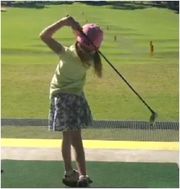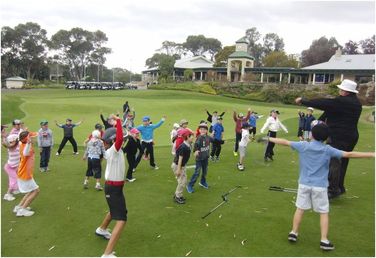 As a parent or coach it is imperative that you have an understanding of what motivates your son, daughter or student to play the game of golf. A research survey completed by a group of children aged 10 to twelve years old ranked the ten most enjoyable factors of why children play sport.The children placed in decreasing order of preference below their reasons for playing sport.
The above preferences are important so as to know the reasons why they play, and also what gives them the most enjoyment in participating in sport. Such an understanding will provide and enable the parent to make golf participation more attractive to their child. This in turn will allow the child to have a more satisfying involvement in the game and lower the chances of them dropping out of the sport. It requires knowing how the junior thinks and learns. Which means you have to observe their body language when they play and practice so as to be able to match their favoured learning style when they are being coached. What I mean is find out if the child's learning style is either more visual (how they see it), kinesthetic (how it feels) or auditory (how they hear it) incorporated it in all their learning of new skills. Remember the professional golf coach/teacher/instructor is not always going to be there when the junior is practicing, so the parent has to take the responsibility of giving the feedback as long it's not in conflict of what the child's professional wants them to be doing.  The Junior Program at David Milne Golf Academy The Junior Program at David Milne Golf Academy Apart from developing the basic technical skills, parents can encourage children to contribute to their own learning by helping them to;
It is very important to allow children time to absorb information and transfer it the "unconscious competence" level before introducing the next skill. Be tolerant and provide direction for their enthusiasm. Maintain interest with varied activities, and limit too much talking, as this is a major distraction when a child is learning a new skill. A critical time is when the child goes through adolescence and experience growth spurts. Arms and legs can be disproportionately long and this can cause a lack of coordination and resulting in loss of form. Recognize this as a stage of physical development, and not a technical issue. During this stage avoid large amount of repetitions involving repeated impacts especially on synthetic mats so as to avoid injury as well. This is just an overview of how you can better understand the junior golfer, so follow the above guidelines for a happy relationship with your child and the opportunity of helping them to fulfill some of their amazing potential playing golf. David Milne and Lawrie Montague - Pro Tour Golf College Your Success On Tour is Our Business
Andy
13/7/2013 12:09:43 pm
Great reading David. Comments are closed.
|
Archives
June 2019
|
Proudly Supported By
Copyright © 2011 - 2018 Pro Tour Golf College
Website Managed By Golf Performance Media
All Rights Reserved
Website Managed By Golf Performance Media
All Rights Reserved

 RSS Feed
RSS Feed



